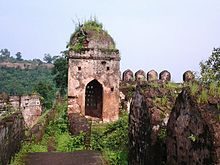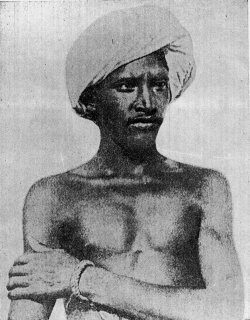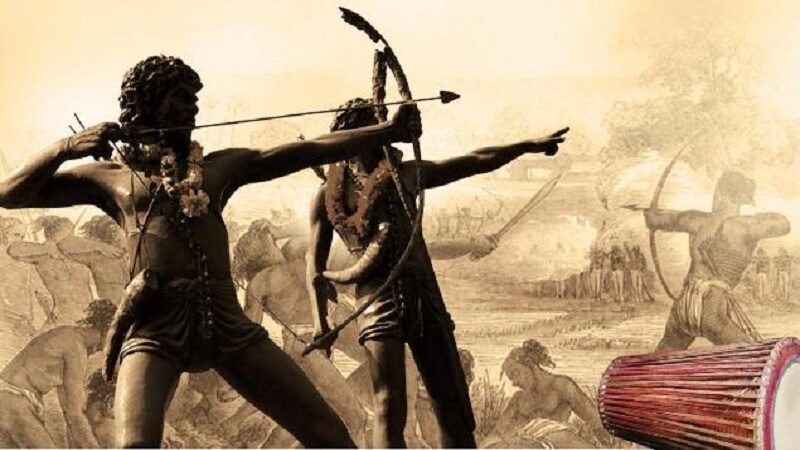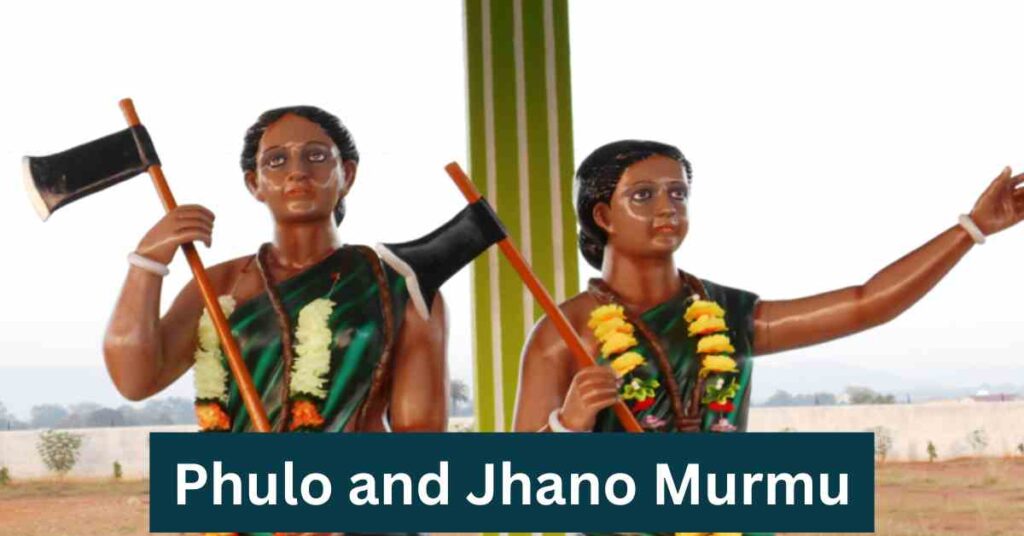October 24, 2025 10:35 pm

Jharkhand, popularly known as the “Land of Forests,” holds a significant place in Indian history due to its rich cultural heritage, ancient tribal traditions, and pivotal role in resistance movements against various rulers and colonial forces. The Jharkhand History encapsulates a journey that spans millennia, from ancient tribal societies to modern-day statehood. Its importance is underscored by its unique tribal culture, contributions to India’s freedom struggle, and natural wealth, which has shaped its identity over time.
The topic of Jharkhand History is particularly important for aspirants preparing for the JPSC CCE exam, as it forms a key component of the syllabus. This article delves deeply into the various phases of Jharkhand History, offering insights into its evolution, historical names, tribal movements, and cultural significance.
Ancient Jharkhand History
Early Mentions and Tribal Foundations
The ancient period of Jharkhand History dates back to prehistoric times when it was inhabited by various tribal communities. These tribes, including the Santhals, Mundas, Oraons, and Asurs, laid the foundation of the region’s rich cultural and historical identity. Ancient texts and archaeological findings provide valuable insights into the early phases of Jharkhand History.
- Aitareya Brahmana (~1000 BCE): The earliest reference to the region is as Pulinda or Pundra, inhabited by forest tribes who lived in harmony with nature.
- Atharvaveda (~1500–500 BCE): Describes the region as Hiranya (gold), alluding to its mineral wealth, particularly gold and other resources found in abundance.
- Mahabharata (~1000–500 BCE): Mentions the region as Pundarik or Pashubhumi (Land of Animals), emphasizing its forested landscape and tribal communities.
These early references highlight the natural richness and tribal-centric lifestyle that defined ancient Jharkhand History.
Key Tribal Contributions
Tribal communities formed the backbone of ancient Jharkhand. They contributed to its distinct identity through their unique traditions, governance, and resistance against external forces.
- Asur Tribe: Among the oldest tribes in Jharkhand, known for their early expertise in iron smelting.
- Munda Tribe: Played a significant role in establishing early forms of governance and tribal kingdoms.
- Santhal Tribe: Known for their rich cultural traditions and contributions to tribal uprisings in later periods.
The tribes of Jharkhand preserved their autonomy and resisted assimilation into mainstream Vedic society, a hallmark of Jharkhand History.
Medieval Jharkhand History
The medieval period marks a significant phase in Jharkhand History, with the emergence of the term “Jharkhand” and the consolidation of tribal identity. This era saw the rise of regional powers, increased interactions with external forces, and the documentation of the region in various texts.
Emergence of the Term “Jharkhand”
The term “Jharkhand,” meaning “Land of Forests,” first appeared in 13th-century texts. During this period, the region was recognized for its dense forests, tribal communities, and natural resources.
- Tabaqat-i-Nasiri (13th Century): One of the earliest mentions of Jharkhand as a forested region inhabited by tribal communities.
- Medieval Jain Literature: Refers to the region as Karna Desh, possibly linked to the Karna dynasty or its fertility.
- Ain-i-Akbari (16th Century): Documents the region’s natural wealth and tribal resistance during the Mughal period.
Tribal Resistance in Medieval Jharkhand
The tribes of Jharkhand fiercely resisted external invasions and maintained their autonomy. This resistance is a hallmark of medieval Jharkhand History.
- Munda Resistance: The Munda tribes resisted attempts by Mughal rulers to control their lands.
- Oraons and Santhals: These tribes played a crucial role in preserving their cultural practices and resisting assimilation.
The medieval period of Jharkhand History highlights the region’s tribal resilience and strategic importance.
Tribal Resistance

The medieval period of Jharkhand History is marked by fierce tribal resistance against external invasions. The Mundas, Santhals, and Oraons resisted attempts by Mughal rulers to subjugate their lands. These tribes maintained their autonomy and continued their traditional ways of life.
Modern Jharkhand History
British Administration and Chotanagpur Plateau
Under British rule, Jharkhand became a significant region due to its mineral wealth and strategic location. The Chotanagpur Plateau, rich in resources, was central to the British administration’s exploitation of the region.
- Resource Exploitation: The British exploited Jharkhand’s mineral wealth, leading to significant social and economic changes.
- Tribal Resistance: The tribal communities continued to resist British policies, preserving their cultural identity and traditions.

Colonial Era and Tribal Movements
The modern period of Jharkhand History is defined by its tribal uprisings and resistance against British colonial rule. The Santhal Rebellion and Birsa Munda’s Ulgulan are landmark events in this era.
- Santhal Rebellion (1855–56):
- Led by Sidhu and Kanhu Murmu, the rebellion was a response to exploitative British policies and zamindari oppression.
- The Santhals organized a mass uprising, which is regarded as one of the earliest organized movements against British rule.
- Birsa Munda’s Ulgulan (1899–1900):
- Birsa Munda, a tribal leader, galvanized the tribal communities of Jharkhand in a movement for autonomy, social reform, and resistance against British exploitation.
- His rebellion, known as Ulgulan (The Great Rebellion), holds a special place in Jharkhand History.

Contribution to India’s Freedom Struggle
Jharkhand’s tribal communities made significant contributions to India’s freedom struggle, resisting colonial forces and preserving their cultural heritage. The Chotanagpur Plateau, rich in resources, became a center of industrial activity under British rule, further highlighting its importance in Jharkhand History.
Significant Tribes and Their Roles
| Tribe | Key Details |
|---|---|
| Asur | Known for their expertise in iron smelting and early metallurgy. |
| Munda, Oraon, Ho | Played a pivotal role in governance and resistance against external forces. |
| Santhal | Known for their cultural richness and leadership in the Santhal Rebellion. |
| Chero, Kharwar | Contributed to the region’s cultural and historical richness. |
Historical Names in Jharkhand History
The evolution of Jharkhand’s names over centuries reflects its tribal culture, natural wealth, and geographical identity. Below is a detailed table of historical names in Jharkhand History:
| Approximate Year/Period | Period/Text | Name(s) | Explanation |
|---|---|---|---|
| ~1000 BCE | Aitareya Brahmana | Pulinda or Pundra | Refers to ancient tribes known to inhabit the region. “Pulinda” and “Pundra” were terms for forest tribes. |
| 4th Century BCE | Kautilya’s Arthashastra | Kikata / Kikata Pradesh | Describes a land of tribes located outside the traditional Vedic boundaries, likely referring to Jharkhand. |
| 1500–500 BCE | Atharvaveda | Hiranya (meaning “gold”) | The region was rich in natural resources, including minerals, possibly leading to its association with “gold.” |
| 4th Century CE | Vayu Purana | Munda | Refers to the Munda tribe, a significant indigenous community in the region. |
| ~200 BCE – 200 CE | Manusmriti | Mukhunda | An early name referencing the presence of indigenous tribal populations, possibly including the Mundas. |
| 4th Century CE | Vishnu Purana | Mund | Another reference to the tribal population, aligning with the Munda community’s name. |
| 4th Century CE | Bhagavat Purana | Kikata Pradesh | Refers to a forested, tribal land outside the mainstream Aryan-influenced regions, often associated with Jharkhand. |
| ~1000–500 BCE (Mahabharata Period) | Mahabharata (Vana Parva) | Pundarik / Pashubhumi (Land of animals) | Describes a forested area, inhabited by animals and tribal communities, reflecting the natural wilderness of Jharkhand. |
| Medieval Period (~5th–12th Century) | Medieval Jain Literature | Karna Desh | Possibly referring to the region’s association with the Karna dynasty or as a fertile land. |
| 13th Century | Various Texts | Jharkhand | “Jharkhand” meaning “Land of Forests,” first appears in historical texts as the region’s name. |
| 13th Century | Tabaqat-i-Nasiri | Jharkhand | The term “Jharkhand” is used to describe the forested region inhabited by indigenous tribes. |
| 16th Century | Tarikh-i-Daudi | Jharkhand | A historical text that references the forested areas in eastern India, including Jharkhand. |
| Late 16th Century | Ain-i-Akbari | Jharkhand | Recorded during Akbar’s reign, it documents the region as a forested, tribal land. |
| Late 16th Century | Hazarat-ul-Quds | Jharkhand | References Jharkhand as an area dense with forests and tribal populations. |
| 16th Century | Padmavat (Jayasi) | Jharkhand | “Jharkhand” appears in the poetry of Malik Muhammad Jayasi, referencing the region. |
| Late 16th Century | Akbarnama | Jharkhand | Chronicles the Mughal administration’s awareness of the region as a forested land. |
| ~300 BCE | Indica by Megasthenes | Kukura / Kukra | Refers to the tribal region in eastern India known for its unique culture, outside the main Indian kingdoms. |
| 2nd Century CE | Ptolemy’s Writings | Mundal | The term “Mundal” may relate to the Munda tribes in the area or describe a regional designation in Ptolemy’s geography. |
| Early 17th Century | Thomas’ Records | Mundal | An early reference by European travelers, likely identifying the region by its prominent tribes. |
| Late 16th Century | Khazanah by Abul Fazl | Kukru Lal | “Kukru Lal” references the tribal and forested aspects of the region. Abul Fazl documented various Indian regions for the Mughal court. |
| 7th Century CE | Hieun Tsang’s Account | Ku-lu-na-chu-ka-la-na / Karnasubarna | Hieun Tsang described regions outside the traditional Indian kingdoms, with “Karnasubarna” referring to tribal areas. |
| Mughal Period (~16th–18th Century) | Mughal Period | Khukhra / Kukru | A name used during Mughal rule to refer to Jharkhand’s tribal lands and dense forests. |
| Early 17th Century | Tuzuk-i-Jahangiri | Khokhra | “Khokhra” was used in the Mughal period to denote the forested regions inhabited by tribal communities. |
| British East India Company Administration (18th–19th Century) | British Administration | Chotanagpur | Under British rule, the area was administratively known as Chotanagpur, a prominent plateau region in Jharkhand. |
Historical Names of Jharkhand: Jharkhand, today known for its forests and mineral resources, has been called by many names over centuries, such as Pulinda, Kikata Pradesh, Pundarik, and Chotanagpur. Ancient texts like the Atharvaveda, Vayu Purana, and Mahabharata recognized Jharkhand for its rich tribal culture and natural wealth. The name “Jharkhand,” meaning “Land of Forests,” first appeared in 13th-century texts. Other names, like Munda and Karna Desh, reflect the influence of indigenous tribes, notably the Munda and Santhal communities. During the Mughal and British periods, Jharkhand was referred to as Kukru, Khokhra, and Chotanagpur. Each name highlights a different aspect of Jharkhand’s tribal heritage, natural resources, or geographical identity.
Early Tribal Presence in Jharkhand
- Ancient Period: In the ancient period, Gupta and Maurya rulers as well as later regional rulers controlled the Jharkhand area.
- Medieval Period: Regional kingdoms established their dominance in Jharkhand, referring to the area as Kukara or Khukhra, as seen in historical accounts like Tabaqat-i-Nasiri.
- Captain Tainer’s Survey: Based on Captain Tainer’s survey in 1824, it was found that the present-day area was rich in indigenous cultures.
- Old Records: The region known as Karn Suvarna in ancient records was also associated with the Chero and Kharwar communities in later periods.
Tribal Contributions to Jharkhand History
The tribal communities of Jharkhand are integral to its history. Their unique governance systems, cultural practices, and resistance movements define the essence of Jharkhand History.
| S. No. | Tribe | Important Details |
|---|---|---|
| 1 | Asur | Considered one of the oldest tribes in Jharkhand, mainly present in Ranchi, Lohardaga, and Gumla. |
| 2 | Birjia, Birhor, Khairwar | Migrated from the Kaimur hills to Chotanagpur. |
| 3 | Korwa | Migrated from Kaimur via hills and settled in the Chotanagpur region. |
| 4 | Munda, Uraon, Ho | Munda tribes established the Gundi Kingdom. Uraons later moved towards the Palamu area, while the Ho settled in Singhbhum and nearby regions. |
| 5 | Chero, Kharwar, Santhal | The Cheros and Kharwars spread through various parts of Jharkhand. The Santhals, one of the prominent tribes, migrated and settled in Santhal Parganas and adjacent areas. |
Additional Historical Insights
- In Vedic literature, tribes in Jharkhand were often referred to as Asur, indicating their early presence in the region.
- Historical texts like Tabaqat-i-Nasiri reference Kukara (a name associated with Jharkhand), and Mahabharata mentions the region as Karn Suvarna.
- Due to its tribal dominance, Jharkhand has also been called Kukubha.
- Chotanagpur Plateau was known by the name Karn Suvarna in ancient records, emphasizing its historical significance.
Importance of Jharkhand History for JPSC CCE
The Jharkhand History section is crucial for the JPSC CCE exam, covering ancient, medieval, and modern periods. Key topics include:
- Ancient Period: Tribal origins, mineral wealth, and mentions in Vedic texts.
- Medieval Period: Rise of the term “Jharkhand,” tribal resistance, and Mughal documentation.
- Modern Period: Tribal uprisings like the Santhal Rebellion and Birsa Munda’s Ulgulan.
- Statehood: Jharkhand’s formation as a separate state in 2000.
Other Dimensions of Jharkhand History
Jharkhand, the “Land of Forests,” has a history that extends beyond the conventional narrative of ancient, medieval, and modern eras. While the tribal uprisings, colonial exploitation, and statehood movements are well-documented, Jharkhand History is enriched by several lesser-explored dimensions. These additional facets include its economic evolution, environmental significance, cultural heritage, political developments, and the contributions of women and tribal communities. Together, these dimensions provide a holistic understanding of Jharkhand’s past and its lasting influence on the present.
Economic Dimensions of Jharkhand History
Ancient Economic Practices
Jharkhand’s economy, deeply intertwined with its natural resources, has been a defining feature throughout its history. In ancient times:
- The Asur Tribe pioneered iron smelting, marking one of the earliest metallurgical advancements in India.
- Gold Mining: Referred to as Hiranya in the Atharvaveda, Jharkhand was renowned for its gold reserves, particularly in the Singhbhum district.
- Agriculture and Trade: Tribes cultivated crops like millet, rice, and lentils while trading forest produce like lac, honey, and herbs with neighboring regions.
Industrial Exploitation During Colonial Era
The colonial period marked a significant shift in Jharkhand’s economic landscape:
- Mining Boom: The Chotanagpur Plateau became a hub for coal, iron, mica, and copper mining. British industrialists profited immensely while displacing tribal populations.
- Land Revenue Systems: Exploitative policies like the Permanent Settlement disrupted traditional tribal economies, leading to widespread poverty and unrest.
Environmental Dimensions of Jharkhand History
Jharkhand’s dense forests, rivers, and plateaus have shaped its environmental history and tribal identity.
Forests as Tribal Lifelines
- Jharkhand’s forests have long served as sources of food, medicine, and shelter for its tribes.
- Sacred groves are integral to festivals like Sarhul, which celebrate nature’s bounty.
Impact of Industrialization
Colonial mining activities caused deforestation and environmental degradation, disrupting tribal livelihoods. Post-independence, large-scale industrial projects further strained Jharkhand’s ecosystems, a recurring theme in its environmental history.
Cultural Dimensions of Jharkhand History
Jharkhand’s cultural history is as vibrant as its natural heritage, shaped by its indigenous communities and their traditions.
Art, Festivals, and Rituals
- Sohrai and Khovar Paintings: Created using natural pigments, these tribal art forms depict nature, animals, and daily life.
- Festivals: Celebrations like Karma, Sarhul, and Maghe Parab reflect the tribal connection to nature and agriculture.
- Rituals: Tribal rituals often involve offerings to ancestral spirits and nature gods, showcasing their animistic beliefs.
Oral Traditions
Jharkhand’s history is preserved through folk songs and tales, recounting heroic deeds, resistance movements, and the spiritual connection between tribes and nature.
Political Dimensions of Jharkhand History
Pre-Colonial and Medieval Governance
- Tribal governance systems were based on collective decision-making, with chieftains like the Mundas leading their communities.
- During the medieval period, the region was known as Kukara or Khukhra, resisting attempts by the Mughals to exert control.
Colonial Resistance and Statehood Struggles
- Movements like the Santhal Rebellion and Birsa Munda’s Ulgulan were pivotal in Jharkhand’s political history.
- The demand for a separate tribal state gained momentum post-independence, culminating in Jharkhand’s formation on 15th November 2000.
Role of Women in Jharkhand History
Women have played an instrumental role in shaping Jharkhand History, from resistance movements to cultural preservation.
In Tribal Uprisings
- Phulo and Jhano Murmu: These sisters fought against British forces during the Santhal Rebellion.

- Women in Birsa Munda’s Ulgulan: Tribal women mobilized communities and played active roles in the rebellion.
Custodians of Culture
Tribal women are key to preserving oral traditions, festivals, and rituals, ensuring the continuity of Jharkhand’s cultural heritage.
Geopolitical Dimensions of Jharkhand History
Ancient Trade Routes
Jharkhand was strategically located, connecting the Gangetic plains to peninsular India. Its trade routes facilitated the exchange of goods and cultural practices.
Colonial Geopolitics
The British exploited Jharkhand’s natural wealth for industrial growth, turning it into a crucial part of their economic empire.
Historical Monuments and Heritage Sites
Jharkhand’s historical sites reflect its rich and diverse history:
- Maluti Temples: A group of terracotta temples showcasing medieval art and architecture.
- Palamu Forts: Built by the Chero dynasty, these forts signify Jharkhand’s resistance against Mughal expansion.
- Itkhori’s Bhadrakali Temple: A site of religious and historical significance, believed to date back to the Mahabharata era.
Legacy and Relevance
The other dimensions of Jharkhand History add depth to our understanding of the region. Its economic, environmental, cultural, and political histories intertwine to create a narrative of resilience and innovation. For students and aspirants of the JPSC CCE exam, exploring these facets is crucial for gaining a comprehensive perspective on Jharkhand’s historical journey. From its tribal origins to its modern identity, Jharkhand remains a land of unparalleled heritage and significance.
Conclusion
The Jharkhand History is a testament to the resilience, cultural richness, and contributions of its tribal communities. From ancient tribal societies to modern statehood, every phase of Jharkhand History offers valuable insights into its identity. For JPSC CCE aspirants, understanding the historical journey of Jharkhand is essential to excel in the exam and appreciate the region’s unique legacy
Useful Links>>
JPSC Notes: Access expertly curated notes covering essential topics for both JPSC Prelims and Mains exams.
14th JPSC PT Exam Comprehensive Test Series: Enhance your preparation with a structured test series designed to cover all aspects of the JPSC Preliminary Test syllabus, emphasizing Jharkhand-specific topics and current affairs.
JPSC Notification 2024: Stay informed about the latest updates, including exam dates, eligibility criteria, and vacancy details for the JPSC 2024 examination.
General Introduction to Jharkhand for JPSC Exam: Gain a comprehensive understanding of Jharkhand’s history, geography, economy, and culture, crucial for the JPSC exam.
official Website: https://www.jpsc.gov.in/






